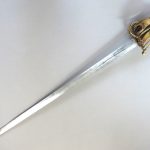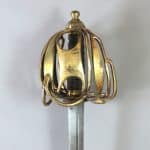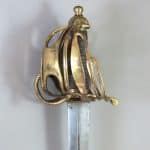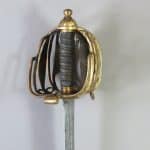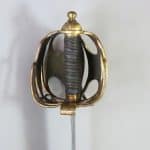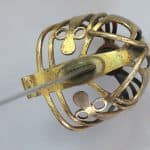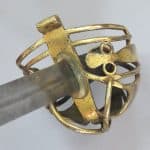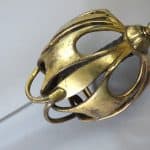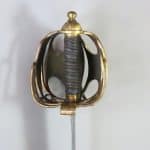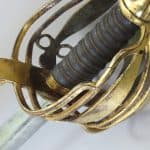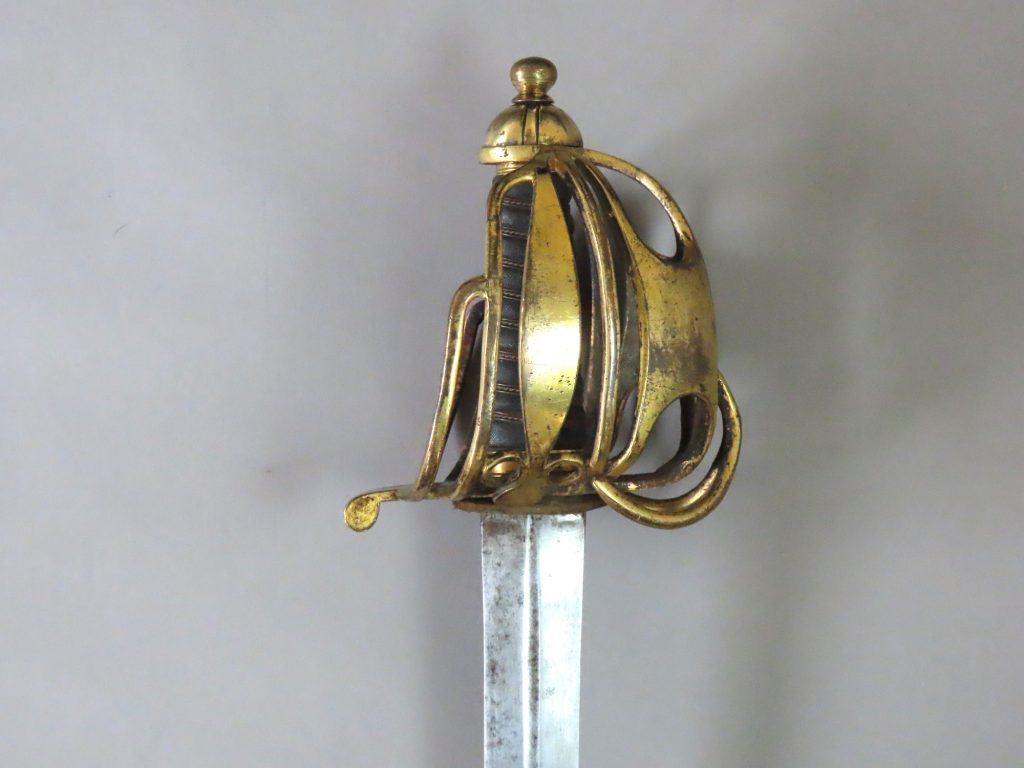
A 1798 Pattern Scottish Highland Infantry Officers’ Sword with Gilt Copper Hilt
To enquire about this itemplease click here
Price: £2,350
Ref: AA.073.18
Item Description
An example of the distinctive basket hilted sword introduced for Scottish Infantry officers in Highland Regiments in 1798. It was replaced by the regulation steel basket hilt 1828 pattern three decades later. The sword type was used throughout the Napoleonic War period. This sword has most of its gilt covering to the bronze hilt still in place.
The hilts of these swords were most usually made of gilt copper, bronze or brass. The hilt of this sword is of gilt bronze. The basket guard is made of rounded bars and flattened plates in the usual manner with forward loop guards and a swollen solid wrist guard terminal to the rear quillon. The upper terminals of the guard arms are fixed onto a ring inside which the stem of the mushroom shaped pommel is fitted. The pommel is dome-shaped with a large separate waisted and domed pommel button on top from which four sets of decorative grooves flanked by narrower lines radiate to the pommel edge.
The double-edged gently tapering blade is 32.75 inches (83 cm) long. Typically it is of lenticular section with a short ricasso. A central fuller commences a short distance from the hilt on each side and is 8 inches (20 cm) long. The blade is unmarked and probably a German import which was the norm for this sword type and most probably of Solingen manufacture.
The grip is of spirally grooved wood covered with shagreen held in place with thin ropes of twisted copper wire flanked with plainer thinner wire now coloured with age. It is mounted with gilt bronze ferrules top and bottom which are incised with decorative lines.
The materials used for 1798 pattern hilts were less robust than iron and as a result were more susceptible to damage. Many surviving and published examples have bars missing, are out of shape and are often with repairs. This sword is a fine example without any such problems. The blade has a few small patches of blackened age-related staining in places and the hilt has kept its shape without damage or repairs as can be seen in the photos.
For other examples of the 1798 type see: Harvey J S Withers, “The Scottish Sword 1600-1945”, Paladin Press, 2009, pages 13 to 151 and Cyril Mazansky, “British Basket-Hilted Swords”, Boydell Press, 2005, pages 131 to 133.

